
Wales is a country that is part of the United Kingdom. It is bordered by the Irish Sea to the north and west, England to the east, the Bristol Channel to the south, and the Celtic Sea to the south-west. As of 2021, it had a population of 3,107,494. It has a total area of 21,218 square kilometres (8,192 sq mi) and over 2,700 kilometres (1,680 mi) of coastline. It is largely mountainous with its higher peaks in the north and central areas, including Snowdon, its highest summit. The country lies within the north temperate zone and has a changeable, maritime climate. The capital and largest city is Cardiff.
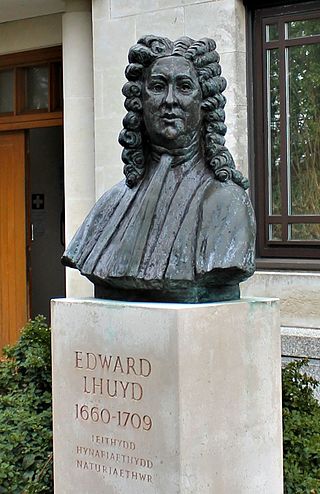
Edward Lhuyd, also known as Edward Lhwyd and by other spellings, was a Welsh naturalist, botanist, herbalist, alchemist, scientist, linguist, geographer, and antiquary. He was the second Keeper of the University of Oxford's Ashmolean Museum, and published the first catalogue of fossils, the Lithophylacii Britannici Ichnographia.
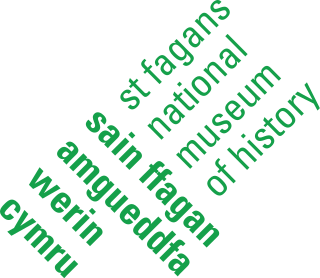
St Fagans National Museum of History, commonly referred to as St Fagans after the village where it is located, is an open-air museum in Cardiff chronicling the historical lifestyle, culture, and architecture of the Welsh people. The museum is part of the wider network of Amgueddfa Cymru – Museum Wales.

Sir Cyril Fred Fox was an English archaeologist and museum director.

An andiron or firedog, fire-dog or fire dog is a bracket support, normally one of a pair, on which logs are laid for burning in an open fireplace, so that air may circulate under the firewood, allowing better burning and less smoke. They generally consist of a tall vertical element at the front, with at least two legs. This stops the logs from rolling out into the room, and may be highly decorative. The other element is one or more low horizontal pieces stretching back into the fireplace and serving to hold the logs off the bottom of the fireplace. An andiron is sometimes called a dog or dog-iron.

The Mari Lwyd is a wassailing folk custom found in South Wales. The tradition entails the use of an eponymous hobby horse which is made from a horse's skull mounted on a pole and carried by an individual hidden under a sheet.

Llyn Cerrig Bach is a small lake located between Rhosneigr and Valley in the west of Anglesey, Wales.

Amgueddfa Cymru – Museum Wales, branded as simply Amgueddfa Cymru, is a Welsh Government sponsored body that comprises seven museums in Wales:

Prehistoric Wales in terms of human settlements covers the period from about 230,000 years ago, the date attributed to the earliest human remains found in what is now Wales, to the year AD 48 when the Roman army began a military campaign against one of the Welsh tribes. Traditionally, historians have believed that successive waves of immigrants brought different cultures into the area, largely replacing the previous inhabitants, with the last wave of immigrants being the Celts. However, studies of population genetics now suggest that this may not be true, and that immigration was on a smaller scale.

Aileen Mary Fox, Lady Fox, was an English archaeologist, who specialised in the archaeology of south-west England. She notably excavated the Roman legionary fortress in Exeter, Devon, after the Second World War.

Capel Garmon is a village near Betws-y-Coed in the county borough of Conwy, Wales. It is situated high above the Conwy valley, in the community of Bro Garmon, and commands views over Snowdonia. The village is known for the neolithic burial chamber nearby.

Llanfechain is a village and community in Powys, Wales, on the B4393 road between Llanfyllin and Llansantffraid-ym-Mechain. Historically it belonged to Montgomeryshire. The River Cain runs through. The population of 465 at the 2011 Census was estimated at 476 in 2019.

Oriel Môn is a museum and arts centre located in Llangefni, Anglesey, Wales.
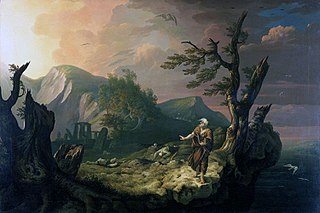
Welsh art is the traditions in the visual arts associated with Wales and its people. Most art found in, or connected with, Wales is essentially a regional variant of the forms and styles of the rest of the British Isles, a very different situation from that of Welsh literature. The term Art in Wales is often used in the absence of a clear sense of what "Welsh art" is, and to include the very large body of work, especially in landscape art, produced by non-Welsh artists in Wales since the later 18th century.
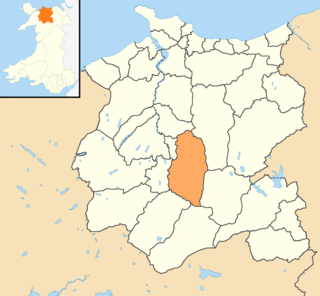
Bro Garmon is a sparsely populated community in Conwy County Borough, in Wales. It is located on the eastern side of the Conwy Valley, stretching from north east of Llanrwst to just west of Pentrefoelas, and includes the villages of Capel Garmon, Glan Conwy, Melin-y-Coed, Nebo, Oaklands, Rhydlanfair and Pentre-tafarn-y-fedw. Moel Seisiog, on the eastern boundary, rises to a height of 1,535 feet (468 m). The main settlement, Capel Garmon, lies 2.4 miles (3.9 km) east of Betws-y-Coed, 5.2 miles (8.4 km) north west of Pentrefoelas, 4.4 miles (7.1 km) south of Llanrwst and 15.7 miles (25.3 km) south of Conwy. At the 2001 census the community had a population of 648, increasing slightly at the 2011 census to 652.

Eurwyn Wiliam is a Welsh curator and author who was Chairman of the Royal Commission on the Ancient and Historical Monuments of Wales (2009–19) and Assistant Keeper of the National Museum Wales.
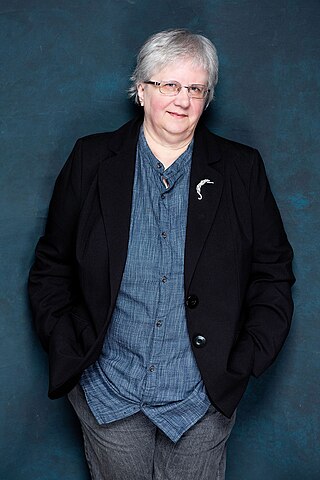
Norena Shopland is a Welsh historian and writer who specialises in (LGBTQ+) research and history. She has been highlighted as a Welsh LGBTQ+ person of significance, and she gives talks, lectures and workshops on Welsh heritage and LGBT+ history. She has organised, curated and consulted on exhibitions and events within the heritage sector in Wales.

The Epynt clearance was the forced eviction of the Mynydd Epynt community in Powys, Wales, where 200 men, women and children were evicted from their homes which included 54 farms and a pub. The eviction was carried out by the British Army and the War Office in 1940, creating the Sennybridge Training Area (SENTA), which is currently the largest military training area in Wales.

Llyn Cerrig Bach Plaque is a bronze plaque that dates from 200BC to AD100 in the Iron Age, found at Llyn Cerrig Bach.




















